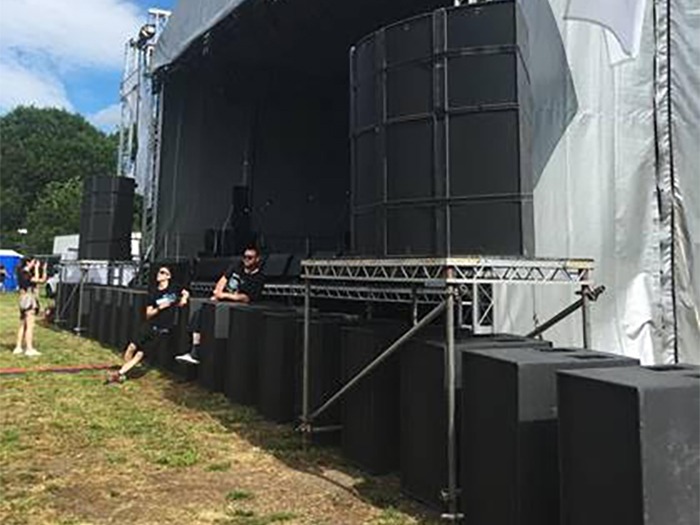With more than three decades as a touring engineer and heading up his sound company, Pyramid Audio, Ian “Fleece” Elliott is well versed in the value of both vintage and contemporary technology. A typical Pyramid Audio sound system combines classic Martin Audio loudspeakers with state-of-the-art Linea Research power amplifiers.
“I’ve got Martin Audio products that go back to the 1980s and 1990s,” he reported. “We plug them into new Linea Research 44M or 48M or 88C power amplifiers and they sound amazing The clarity is phenomenal. Everybody’s blown away by it every single time.”
Although Elliott has long favored Martin Audio loudspeakers, he has tried an assortment of power amplifiers over the years before settling on Linea Research. “We do mostly loud rock shows, and it demands a lot of power,” he offered. “The new Linea Research amplifiers save us a lot of rack space and weight. We used to run 4U amplifiers that weighed 35 kg [77 lbs] each; by the time we added crossovers, one amp rack would be 14 rack units and weigh 150 kilos [330.7 lbs]. Now we can do that with one Linea 48M that weighs 12.5 kg [27 lbs], and we’ve gone from 14U to 2U. It shaved a colossal amount off our trucking.”
Elliot typically chooses Linea Research 48Ms to drive bi-amped stage wedges and picks Linea 44M20s for front-of-house. He uses his older Linea Research XiB amplifiers on drum fills, bridging channel 1 and 2 to drive a sub and using channels 3 and 4 to drive a bi-amped wedge. “There’s so much you can do with the M series’ built-in DSP limiters and virtual crossover,” he observed. “And we never run out of headroom; I’ve seen the limiters come on now and then but you can push and push, and it stays clean all the way up. You don’t hear them working; it’s absolutely stunning. And the Linea amps are extremely reliable, but if a client does have an issue, I can see when they had voltage spikes or anything like that and figure out what happened.”
At Apex, a local venue in Bury St. Edmonds, Elliott recently replaced their old amplifiers with two Linea 88Cs, one 48M, and a 44M. “The Apex is a three-tiered venue, and it’s quite tricky getting even dispersion everywhere,” he explained. “In the second balcony we’ve got six boxes on the lighting grid and another six boxes on an advanced bar, and they’ve each got different EQ, time alignment, and limiting. We chose two 88C amps because they have eight channels each, which gave us the ability to have different settings for every box. The I/O of the 44M and 48M, which are our usual go-to amplifiers, worked fine for the rest of the system. The Apex sounds so much better with the new amps.”
While audio quality, DSP features, rack space, and weight are top reasons Elliott chooses Linea Research, he points to power usage as another factor. “When the system’s hammering, and you check the ammeter to see how many amps you’re drawing, you go, ‘What? That just doesn’t make sense!’” he exclaimed. “You’re only drawing 10 amps per phase, and it’s almost face-melting volume. It’s unbelievable how little power they use for so much output. I don’t understand the physics of it; I just thank the people at Linea Research—constantly.”

